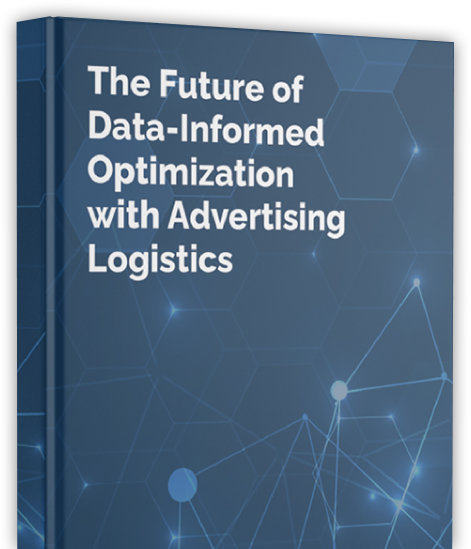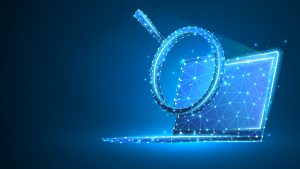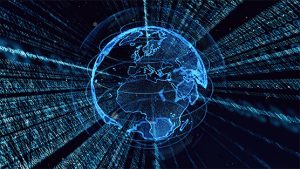Description
While transparency and observability are often used synonymously, the ability to control and take action is what sets them apart. Transparency may inform you when something occurs, observability helps you understand why it occurred and what you can do to change the outcome. There is a programmatic ecosystem paradigm shift underway, driven by machine learning and the availability of massive amounts of data. Observability informs what data is worth examining, so you know where to take action.
In this episode, find out why end-to-end observability is critical. After all, if you can observe end-to-end, you can control end-to-end and you can optimize end-to-end. At PubWise we call it Radical Observability™.
Transcript
Tony Winders: Hello, and welcome back to On the SPOT. My name is Tony Winders, Founder of The Winders Group and my guest today, like every episode, is Stephen Johnston, the Founder and CTO of PubWise. Stephen, welcome back to your program. We love to put Stephen On the SPOT because he has his finger on the pulse of the industry. And today we’re going to be talking about observability and digital advertising. And what that means relative to publishers and advertisers and the whole ecosystem. So what do you mean when you talk about having radical observability, Stephen?
Stephen Johnston: In layman’s terms, observable, observability, are the ability to see things. And I think that simple definition is not terribly different from exactly what we’re talking about, which is the ability to see things. And it will surprise a lot of people not in the advertising industry, just how difficult that has been historically, just the ability to see things. And in the last few years, we started to get more observability, header bidding, more data collection, and it was still a matter of infrastructure platforms to actually present that in a meaningful way to publishers. And so we started PubWise on the publisher side, largely for providing an analytics and observability platform for header bidding. And then using that information to affect change on behalf of the publisher. So there’s this cluster of things, when we talk about observability, observability is a 50 year old concept when it comes to programming. It’s a mathematical pair and control system, with a thing called control, you have to have observability, to have control. We talk a lot in our industry about transparency, and transparency is great, I don’t think it’s the same as observability. Transparency is just that you can see the data and you can see what’s happening. But it’s the combination of observability and control that allows you to actually affect change. And so transparency isn’t enough. And that’s where we’ve gotten to radical observability because it’s observability that gives you the capability to optimize, to make changes, to affect change in the system.
Tony Winders: So from the layman’s perspective, say, as an advertiser, if I think about transparency, I want to know where my ads are running. And the reports are going to show me impressions, clicks, conversions. And from the publisher perspective, I suppose I would like observability into who’s taking my audience and what are they doing with them? What kind of ads are appearing on my site? So put it into context from the publisher or the advertiser perspective and what’s been historically available from a reporting standpoint, and transparent to us versus how that’s changing and moving toward observability per se.
Stephen Johnston: Observability is much more fine grain, the typical report from either side, buyer or seller, tends to be summarized, smoothed out, presented along a couple of dimensions almost exclusively hour or day. Really, from an observability perspective, it’s all squeezed out. And you’ve just got a report of results. The old, “results are great”, but it’s more about the actions along the way. And that’s where observability comes in. We talk in sales and business, you can’t just focus on the result, you can’t get a Grand Slam if you didn’t have three base hits along the way and three base hits hits are the action that leads to the Grand Slam. And so that’s where observability comes in, getting more detail about the parts that contribute to that and then making changes and affecting those things on behalf of the people that are participating. So if, you know, or you can see where campaigns and buyers align better with an audience on an ongoing basis, you can optimize campaigns on behalf of that buyer. That requires observability, not just a three weeks after transparent report of what happened that wasn’t optimized. You can’t just get to the end and say, here’s what happened, observability is about affecting it as it goes through and over time. And ultimately, there isn’t really a buyer vs seller dichotomy here, affecting those things positively affect both of you, it gets better alignment to the audience for the buyer, and it will then align what those buyers are willing to pay to that audience on behalf of seller, either moving that campaign towards higher value traffic and allowing other sources take the rest of the traffic, or determining even sometimes that a different programmatic source might be better than a direct campaign you’ve got running. Seeing that, then let’s you make changes all along both from content and from campaign factors.
Tony Winders: What kind of properties or elements have to be present for observability to take place? What conditions require observability?
Stephen Johnston: There’s almost like this Maslow’s hierarchy kind of thing. At the bottom, the basic need is data infrastructure. One of the reasons that historically, we haven’t provided this information is because it’s hard, requires a lot of infrastructure, requires a lot of technology to track the data, the volume we’re talking about. And historically, it’s been more expensive to do that and so some of the value inflection points maybe weren’t there. We solve a lot of that, in terms of cloud technologies that we leverage, data infrastructure that we leverage. To meet that basic need you have to collect it, you have to have it at that granularity in order to then get observable. The next level up from that is, sense making around it, you can have all this data but how do you make sense of it? How do you present it in useful ways? And that’s where we’re building automation. A human can’t make sense of all this, there’s no graph that actually explains all of that information. Those graphs can let a person know that there’s things going on, that there’s things that are being done, so we provide dashboards and visibility into it. But those things are indicators of the internal performance of the system. That’s really only systems of automation that let us leverage, and then leverage that observability. For instance, on the header bidding side, we deploy every few hours, 10, 15, 20,000 different optimized configurations on behalf of our customers, it’s something you simply can’t do as a human and there’s no way to really make sense of all of that as a human. Dashboarding focuses on the thing that everyone really cares about, net revenue. Is net revenue improved? Well, then, the system underneath, there’s enough blinking lights and enough graphs to tell you that it’s doing what it needs to do. But observability isn’t just for people, you have to be able to observe the system too. So there’s a bit of an interplay there, enough observability to know that things are running properly for the customer, and then enough data to feed smart machine learning algorithms to actually make the changes on their behalf.
Tony Winders: I was going to ask if what you’re describing is ostensibly machine learning. It sounds like that’s what’s happening to be able to make sense of all that data.
Stephen Johnston: Exactly, you could look at all those data points, and I think some people want to dig in, there’s a curiosity, but the points along which we can optimize becomes so great that the places that are configurable, that even if you knew you needed to do 20,000 things, you couldn’t actually do 20,000 things, so you have to find another solution. And that’s where machine learning and automation comes in. We talk about and use a term, Gartner coined it last year, hyperautomation, and it comes from robot process automation, and machine learning, then traditional automation techniques, and it’s really all of those in play. Some things aren’t machine learning, some things are; if this number is bigger than this number, but we need to track it 1000 times an hour. Those are things that people can’t do so you automate them, you bring in machine learning, there’s an ensemble of things that are done to do the ultimate goal, which is improving revenue for the customer, or improving results for a buyer’s campaign.
Tony Winders: So in order for that to take place, for radical observability to happen inside of a programmatic platform like PubWise or elsewhere, it makes sense why you talk about having an end-to-end platform. If you have all these different hops and all these different vendors that are part of that ecosystem, I don’t see how you could observe everything. Can you tie it back to the company’s thoughts on end-to-end?
Stephen Johnston: From a mission perspective, you have to do a couple of things, we have to have as much of our own infrastructure as we can, where we get the most control, the most observability, the most results. We have to partner with as many people to share our beliefs and will share enough data for us to be meaningful and who also have levers we can pull to exert control, because remember, observability is one thing, but control is its dual. You need to be able to make modifications responsive to what you can see. The end-to-end platform is key in that for us, we can see the whole thing, control the whole thing, so we can make changes through that whole line. The pragmatic reality in our industry, put more simply, if you have it end-to-end, you can observe it end-to-end, you can optimize end-to-end. But there’s a pragmatic reality in our industry where there’s a whole bunch of players. So of course, we’ll partner and then we’re going to be out there talking about our beliefs and working with industry people like the IAB, who tried to get around standards. One way to get around control and observability and then work with partners is through standards and standards bodies. Can we exchange enough information for us to both value from that in a way that we both understand? It’s complex, but the end-to-end platform resolves some of that complexity.
Tony Winders: Would you say that’s what differentiates PubWise? Where have you guys been able to excel that others haven’t? And to that end, where are we in that continuum? Is this the new next wave of tech? Are we in the middle of it? Or at the end of it? Where are we in that process of observability?
Stephen Johnston: The combination of technical innovation around how we deploy technology, along with, an organizational and business demand for observability, and transparency, as well as cookies and regulation, are pushing the industry to deploy or to provide services that look and are deployed more like a publisher would have done themselves. So we can, in a SaaS based or in a managed service base, deploy in a way that looks like the publisher built it, but still retain the advantage of using a third party like us without downsides of the traditional third party arrangement. So do I think that’s the future? Yes. This idea of handing everything you do over to someone else, and then hoping they do really well, on your behalf, goes away. We really need to move to an infrastructure play, where we’re deploying inside of either customer infrastructure, or we are the ad tech infrastructure for the publisher, connecting them all the way to buyers. And that’s where you’re no longer throwing it over the fence. The publisher retains control of the data, and they retain control of the relationships all the way out.
Tony Winders: So if I could summarize our conversation, it’s that, if you can observe end-to-end, you can control end-to-end and you can optimize end-to-end. And it seems like that’s what anyone buying or selling in the programmatic ecosystem should be thinking about. But what would be your key takeaway or reaction to that before we wrap up?
Stephen Johnston: My key takeaway is, that does not have to be the loss of ownership of the relationship, the data, the customer, and the buyer that we’ve seen traditionally. People talk about end-to-end as, I’m giving someone else control and ownership of everything. I think that’s the problem we’ll solve long term and that we are solving now is pertaining ownership for the major participants, the buyer and the seller. When we do that, we get the best of both worlds, all of that technical control we talked about while retaining the value of the ownership in the publisher’s hands.
Tony Winders: I think we should leave it there. I’d like to thank you again for letting us put you On the SPOT. We’ve been talking about observability in digital advertising today with Stephen Johnston, the CTO and Founder of PubWise. Thanks Stephen, and we’ll see you next time.





